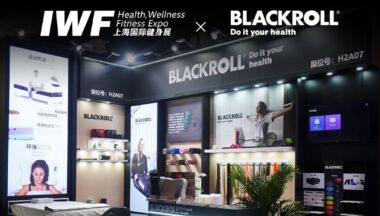E-commerce Media Spending in China 2022: Increasing but shifting how it is allocated

Some media outlets had projected that post-lockdown “revenge buying” may result in a similar outcome this year heading into the June 18 shopping festival because China’s e-commerce business witnessed a V-shaped resurgence in 2020. However, we discovered that the 2020 rebound is challenging to imitate. Instead, Chinese media referred to the June sales event as “the coldest 618” ever as a result of Li Jiqi, China’s top KOL, ceasing to stream live, as well as the slowdown in the economy brought on by the lockdown.
According to Ebiquity’s research, large marketers’ spending on media on Chinese e-commerce platforms increased by 9% in the post-pandemic period, rising from 22% of total media investment in the pre-pandemic years (2018-2019) to 31% now (2020-2021). It also emphasized that, according to eMarketer’s trend research, e-commerce sales would overtake brick-and-mortar sales in 2025, with online sales accounting for 45.3% of all retail sales.
The analysis from Ebiquity also shows how JD.com and Pinduoduo are eroding Alibaba’s dominance. In fact, it mentions how Douyin, Kuaishou, Little Red Book, and WeChat have entered the fiercely competitive e-commerce battlefield in addition to JD and PDD. Planning and evaluating media spending in Chinese e-commerce can be challenging given the dynamic environment.
Ebiquity discovered that the costs of biddable media can vary by more than 100%, high CPC doesn’t always result in better ROI, and the hottest e-commerce festivals don’t always ensure it.
Campaign enquired further of Stewart Li, managing director of Ebiquity China, regarding the most recent developments in Chinese e-commerce and how advertisers should modify their e-commerce media buying strategy in light of these developments.
How will media buying be impacted by rising e-commerce sales?
The type of strategic planning used by a media agency in China will be significantly impacted by the ongoing growth in e-commerce sales. The majority of agency planning strategies employed today are exposure-focused. Advertisers, however, are dissatisfied with the conventional methods because they want media planners to consider more factors and be more aware of how Chinese consumers make decisions and make purchases, and to plan media accordingly.
Beyond increased onsite e-commerce spending, we anticipate that advertisers will shift more of their advertising and promotional (A&P) budget from exposure-focused video and display titles (insertion order buys) to media titles and formats that have partnered with e-commerce platforms that have retargeting functionality in order to increase traffic through offsite media (more biddable buys).
Additionally, because they offer a one-stop shop from exposure to shopping carts, social commerce platforms like TikTok, Kuaishou, and WeChat, to mention a few, will acquire a larger part of media spending.
What do you think about JD and PDD challenging Alibaba’s dominance?
The e-commerce battleground, in our opinion, has grown more diversified as well as expanded to new platforms. It could be more difficult for brand owners to manage their e-commerce media expenditure because different e-commerce platforms have different game rules and ecosystems within each of their walled gardens. It is essential for advertisers to maximize or collaborate across many platforms to prevent cannibalization.
The hottest e-commerce festivals may not always provide the highest return on investment, according to your analysis. So what advertising tactics would be more successful?
The most recent June 18 e-commerce festival (618) experienced a reduced growth rate of 13.5%, which is reflective of the harder economic climate and the unfavorable consumer mood following the lockdown in Shanghai. The 618 pre-launch of Tmall, JD, and Tiktok was postponed, and less marketing was done for the event as a whole.
Alibaba has not released the overall value of transactions this year due to weak sales, which is unusual for the business. In contrast to JD’s 10% rise and PDD’s expected 50% growth, Syntun Data predicted that Alibaba’s 618 sales would have decreased by 10%, mostly as a result of steep discounts and starting from a low base.
We think that today’s e-commerce platforms aren’t all that different from traditional brick-and-mortar retailers, therefore advertising should treat them similarly. We suggest that advertisers create and carry out regular CRM programs, as well as monthly and seasonal e-commerce promotions.
By 2023, 50% of China’s population will be watching live streaming video, according to Ebiquity’s KOL and live streaming analysis. What direction do you think this social commerce trend will go in China?
Short video live streaming has now given a boost to social commerce after the fantastic live streaming e-commerce sales growth decreased to 45% this year. High consumer engagement brought about by pertinent content is one of the main factors contributing to its success. This results in increased daily active use, which raises the gross merchandise value (GMV).
Contact us to see how we can help you deal with the challenging e-commerce environment in China anno 2022.
Shanghai, 14th September 2022



